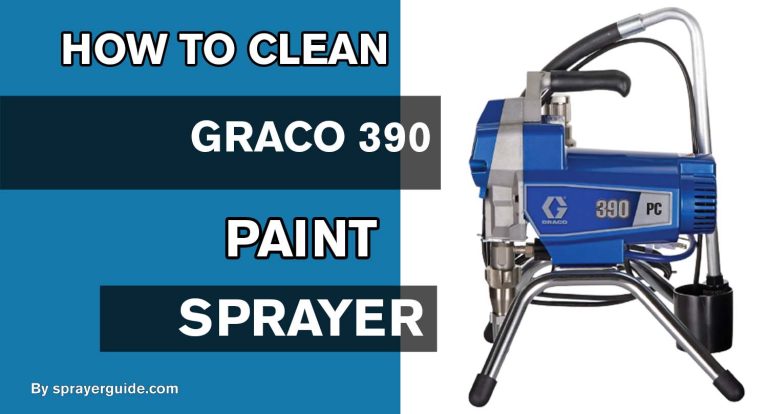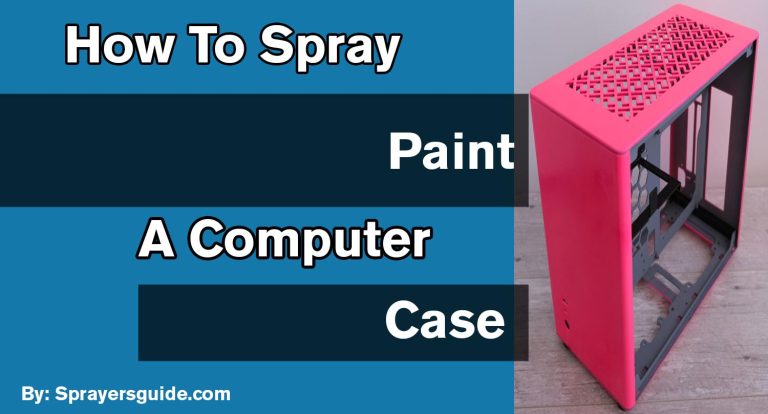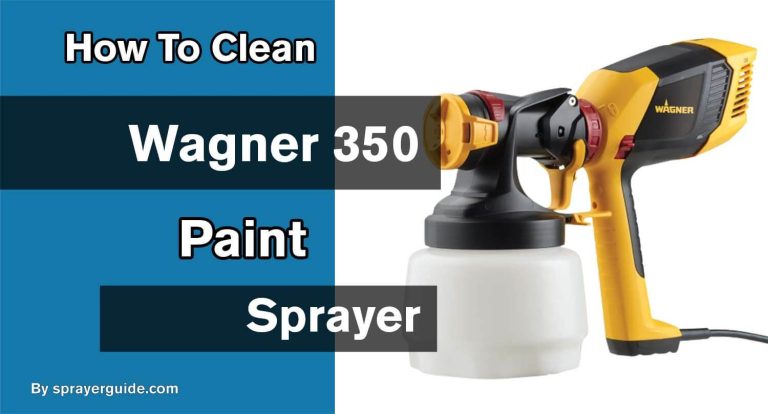Are you looking to keep your Wagner Control Pro 150 sprayer in excellent condition? Regular cleaning and maintenance are essential for ensuring its long-term performance. Fortunately, the cleaning process is straightforward – with just a few simple steps, you can have your sprayer running optimally again in no time! This blog post will discuss how to clean a Wagner Control Pro 150 model quickly and effectively. Keep reading to learn more about this helpful skill!
Tools Required:
- Power washer with a gun and nozzle
- Water supply hose
- Bucket
- Sponge or soft,
- clean cloth
- Mild detergent or degreaser
- Safety goggles
Hand protection gloves Prepare the necessary tools before cleaning your Wagner Control Pro 150 sprayer. A power washer with a gun and nozzle is required to clean the sprayer’s external parts. You will also need a water supply hose to connect to the power washer, a bucket, sponge or soft clean cloth, mild detergent or degreaser, safety goggles, and protective gloves. You can start cleaning your Wagner Control Pro 150 once you have gathered your supplies.
How To Clean Wagner Control Pro 150?
It’s essential to know how to clean your Wagner Control Pro 150 so that it keeps working well. Here’s a step-by-step guide on adequately maintaining and cleaning your airless paint sprayer.
Gather Tools:
Before cleaning your Wagner Control Pro 150 sprayer, assemble the proper tools. You will need a power washer with a gun and nozzle, a water supply hose, a bucket, a sponge or soft clean cloth, mild detergent or degreaser, safety goggles, and protective gloves.
Prepare Spray Gun:
Disconnect the airless spray gun from the system and pull the trigger to remove any remaining paint until only clean liquid comes out. Then disconnect the material hose from the outlet pipe on the machine.
Remove Paint and Debris:
Connect the power washer to your water supply. Then, using a low-pressure setting, spray down the system to remove any paint or debris from its exterior parts. Be sure to use caution when spraying near electrical components.
Clean Spray Gun:
Fill a bucket with warm, soapy water and submerge the airless spray gun in it for 10 minutes. Remove any residue from the gun’s surface using a cloth or sponge. Before reconnecting it to the system, thoroughly clean it with clear water and dry it with a soft cloth.
Clean Other Parts:
To clean the remaining parts of the Wagner Control Pro 150, use a sponge or cloth to wipe them down with a mild detergent or degreaser. Then rinse off the soap thoroughly with clear water and dry all components before reassembling them.
Reassemble:
Once everything is clean and dry, you can begin reassembling your Wagner Control Pro 150 sprayer. Make sure all hoses and fittings are securely connected to avoid leaks. Finally, ensure all electrical connections are secure before powering on the machine. Following these steps, you can keep your Wagner Control Pro 150 sprayer in good order. This will keep it running efficiently, allowing you to finish the job quickly.
Power on:
Once all components have been cleaned and reassembled, it’s time to power on your Wagner Control Pro 150 sprayer. Make sure that all electrical connections are secure before turning them on. Once powered on, test the system by pulling its trigger until only clean liquid comes out. This will ensure that your machine is working correctly and ready for use. If you take care of your Wagner sprayer, it should last many years and work well. If you follow these steps, you can keep it in good condition and working efficiently, so you can quickly get the job done.
Frequently Asked Questions:
To properly clean your Wagner Control Pro 150 sprayer, you will need a power washer with a gun and nozzle, a water supply hose, a bucket, a sponge or soft clean cloth, mild detergent or degreaser, safety goggles, and protective gloves.
No special skills are required to clean the Wagner Control Pro 150 sprayer. However, following the manufacturer’s instructions closely and using caution while operating any power equipment, such as the pressure washer, is essential. Be sure to wear safety goggles and protective gloves when performing this task.
Cleaning the sprayer regularly is recommended to ensure it performs optimally. After each use, it is essential to rinse out the pump and clean any visible dirt or debris with a mild detergent or degreaser. An annual deep cleaning of the entire unit is recommended to keep your Wagner Control Pro 150 in top condition.
Before you begin the cleaning process, read and follow all safety instructions the manufacturer provides. Also, turn off the power washer when not in use and exercise caution when using any power equipment. Finally, wear protective gloves and safety goggles when cleaning the sprayer to avoid getting any water or chemicals in your eyes or on your skin.
Yes, caution must be taken when using a pressure washer on the external parts of the sprayer. Keep the pressure at 1,000 psi or lower and hold the nozzle at least 12 inches from the cleaned surface. This will ensure that you do not damage sensitive components while still achieving a thorough cleaning.
Conclusion:
Finally, the Wagner Control Pro 150 must be cleaned after each use to ensure proper and efficient operation. Always wear safety goggles and protective gloves when cleaning the machine, and provide you have all the necessary tools. When cleaning your Wagner Control Pro 150 sprayer, use a power washer with a gun and nozzle, a water supply hose, a bucket, a sponge or soft clean cloth, and a mild detergent or degreaser. After cleaning, keep your machine in a cool, dry place to avoid dust and dirt buildup. Following these steps will assist you in keeping your Wagner Control Pro 150 operating at peak performance.
Read More:
- How Long Does Primer Spray Paint Take To Dry
- How To Spray Paint Wood Chairs
- How To Thin Water-Based Paint For Roller
- How Long Does Spray Paint Take To Dry Metal
- Is It Better To Spray Or Roll the Interior Paint
- Does A Paint Sprayer Use More Paint Than A Roller
- How To Thin Water-Based Paint For Spraying
- How To Clean Wagner 350 Paint Sprayer
- How To Paint A Textured Ceiling With A Roller
- Which Is Better, Air Or Airless Paint Sprayer
- How To Use Hvlp Spray Gun
- How Long Does Spray Paint Take To Dry On Cardboard
- Graco Magnum Prox17 VS X5







